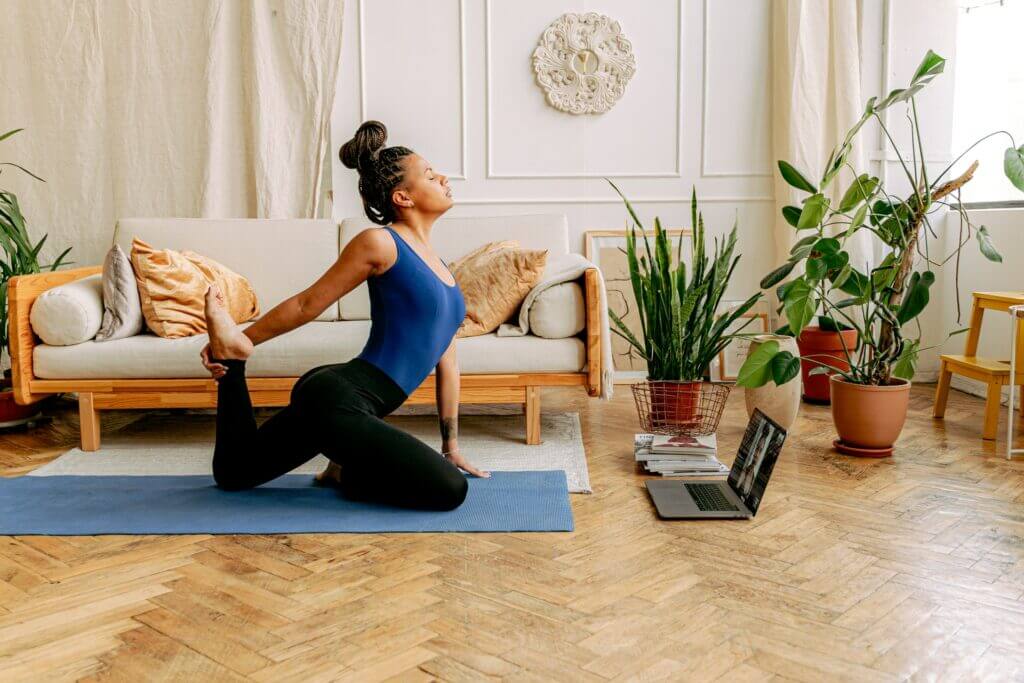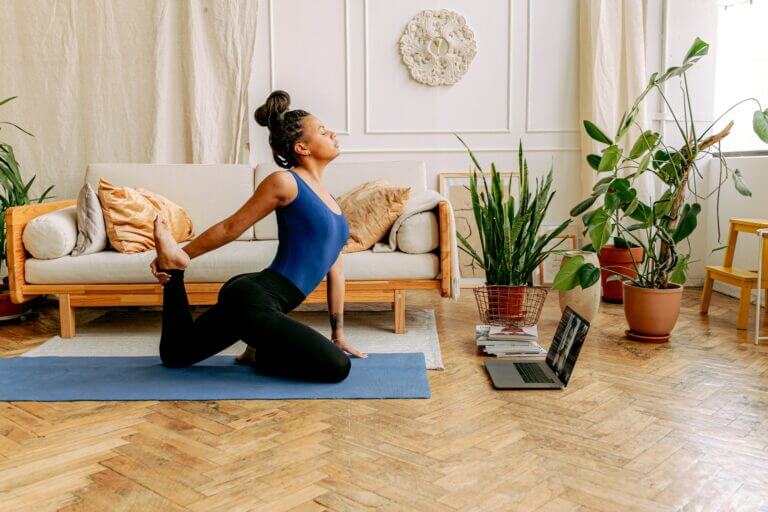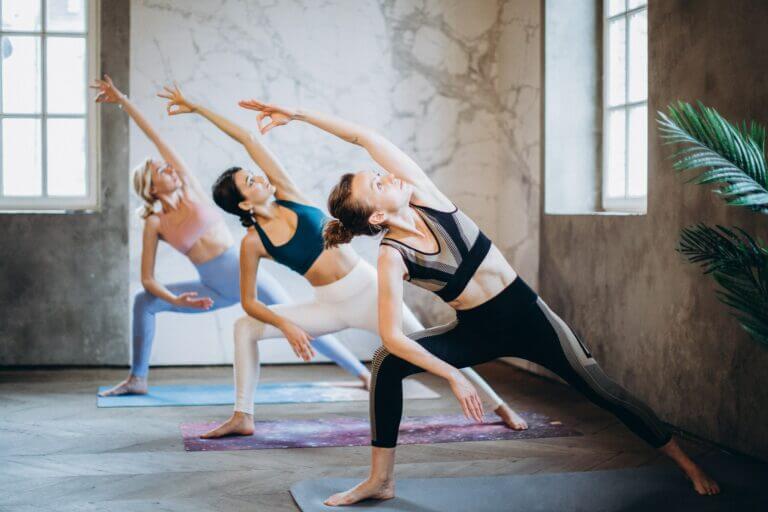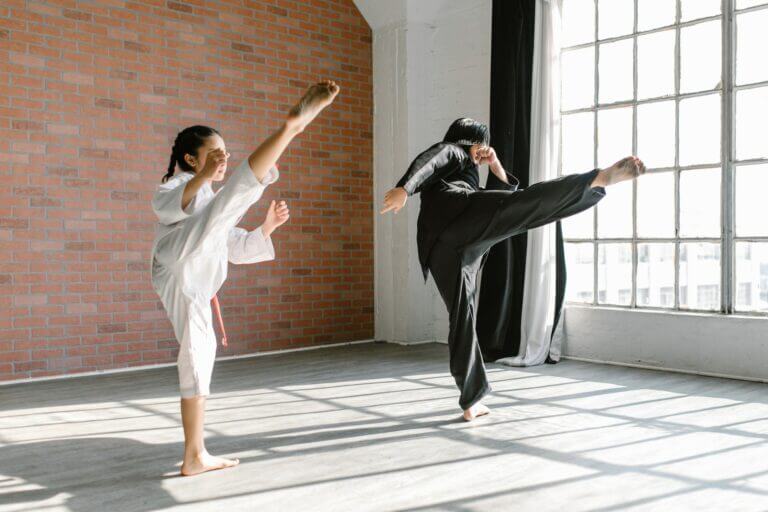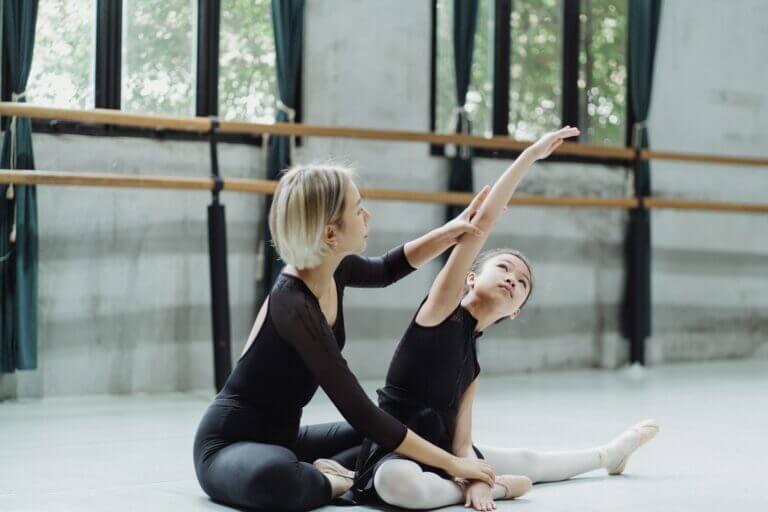You’re interested in stretching to improve flexibility, good!
There are many benefits of stretching to be had when you implement it into your daily routine. Said benefits include—a better night’s sleep, improved posture, less stress after a hectic day, improved blood flow, a full range of motion, and enhanced physical performance.
And that’s just scratching the tip of the iceberg!
Stretching can help you do even more things—as long as you do it right.
How do you know that you’re stretching your body the proper way?
Here are 13 stretching tips for safe stretches and general rule of thumbs to keep in mind as you start your stretching routine.
1) Warm up your body before you start stretching.
You may think that stretching is warming up, but that isn’t the case. Stretching is part of warming up, and you should always move your limbs around first before you begin stretching your body. This is to prevent injury by stretching “cold” muscles—which can do more damage than good! So start by stretching for 5 to 10 minutes and really take the time to feel a stretch in each movement. You can try doing either static stretches or dynamic stretches.
2) Stretch both sides equally
You don’t want to end up with an imbalanced body, with muscles developing more on one side to compensate the lack of strength in the other. So, you should make sure to stretch both sides of your body equally—stretching your left hamstring after stretching your right hamstring. You’ll also want to hold each stretch for the same amount of time. Try to also balance the types of stretching you do, like static and dynamic stretching.
3) Don’t try to do everything all at once—take it slow
Remember that your body has its limits, too. If you’ve spent decades developing stiff muscles, it’s likely that it will take a while before you can see any results in your flexibility. So, just take things slow, one step at a time. You’ve got this! You don’t want to increase your risk of injury, so breathe as you hold the stretch. Don’t suddenly drop down toward the floor when stretching a muscle, or you will experience pain or discomfort.
4) Remember to breathe
Remember your yoga instructor’s constant reminders to inhaaale… exhaaale…? Breathing is very important in stretching, as deep breaths help to enhance your blood circulation. It’ll increase the oxygen level in your blood, and your muscles will be prepped and ready for activity. So, don’t hold your breath when holding a stretch. It could actually contribute to muscle tightness.
5) Stop if it starts to hurt
Stretching shouldn’t hurt at all, so if you feel a sudden sharp pain, that’s a big red flag. Perhaps you were too eager, so you’ve forced your body past its limit. That’s no good. Instead, gently ease yourself into the stretch, but stop if it feels like you’re going too far. Nothing good comes from overexerting yourself! Don’t stretch to the point of pain, and remember to keep some safety tips in mind. That way, you can reduce your risk of injuring your muscle and actually also help reduce muscle soreness after exercise.
6) Stay positive
Keeping a positive view of yourself is also important. Just because your friend can do splits in a week while it takes you a month, it doesn’t mean that you’re a failure. Maintain a positive attitude as you look back on your progress and see just how far you’ve come! Staying positive can help you improve your mentality and help you stretch for 10 minutes each day because you’ve developed a positive thinking about stretching. Remember, stretching helps improve flexibility, but it doesn’t happen overnight.
7) Remind yourself that every beginner isn’t great at what they do when they first start out
In line with the previous point, if you’ve just started stretching, don’t fret about not being able to touch the tips of your toes! Flexibility doesn’t come over night. So, breathe in deep, and relax. You’ve done well for a beginner! You can also note your progress and see just how far you’ve come. Regular stretching routines also help to improve your performance, but it will only show its results over time. Even just a few minutes of stretching each day is enough to help increase your flexibility, bit by bit.
8) Try to make stretching a routine
Practice makes progress, so make it a point to stretch every day. That way, you can see the fruits of your labor. We’ll lose our skills if we don’t use them—still remember how to count to hundred in Spanish? Yes, stretching works the same way too. Stretch every day, and you’ll feel better. Miss even a single day, and reset your progress. Try adding stretches into your exercise routine two to three times a week, at the end of it so your muscles are warm and you can cool them down. Remember, you can stretch anytime, so start a stretching routine today!
9) Don’t bounce or make jerky movements!
Keep in mind the safe way to stretch—you don’t want to hurt yourself! Bouncing when stretching can temporarily increase your range of motion, but doing so can create little tears in your muscles. Try to stretch in a smooth movement because bouncing as you stretch can injure your muscles and actually contribute to tight muscles. Also, you must stop immediately if you feel any discomfort when doing any type of stretch.
10) Make sure to let your muscles rest in between
While stretching can help improve body aches and pains, one of the most overlooked rules is to let your muscles rest. Just like how you need frequent breaks in order to stay productive, your body needs sufficient rest. By stretching one muscle group per day, you’ll let the other muscle groups in your body rest and recover. This way, you can see more effective results.
11) Keep track of your progress by taking pictures
One good way to remind yourself of how far you’ve come since you first started stretching is to take a few photos of yourself doing your stretches. You can get a motivational boost when you look back and see the visual record of your flexibility progress! For example, stretching is a way to increase flexibility, so you can take pictures of yourself doing splits before you started stretching, vs doing splits a month after you’ve started stretching. You can definitely see the difference
12) Think about the benefits you’ll gain by taking the time to stretch each day
Spend some time focusing on the long-term benefits stretching and flexibility can bring for your body. By keeping your goals in mind, you can find the energy and strength to go on—even when you don’t feel like doing anything on certain days. Your mental health and overall well being will thank you for your hard work. Every effort counts! For example, you might suffer from tight muscles and hip flexors from sitting all day. A regular stretching program may help to reduce back pain and muscles soreness in muscles and joints. In that case, the best time to stretch is when you’ve first woken up in the morning or before you sleep at night.
13) Use fitness apps to remind you to stretch and track your progress
If you find it hard to keep up a routine, or that you often forget to stretch, you can try turning to fitness apps to remind you to stretch. There’s a plethora of apps on the PlayStore and AppStore that helps your track your progress and lets you customize your own personal set of stretching exercises. For example, you can arrange a few stretches that you always do together, like a standing hamstring stretch, a back stretch, a triceps stretch, and a quad stretch. Most apps allow you to add stretches and remind you in the form of a to-do list.
The Takeaway
Whether your aim is to finally learn how to do the splits or just to loosen up your muscles, it’s important to know your body’s limits.
Keeping these tips for stretching in mind will help you do your stretches in a safe and timely manner.
Practicing safe forms of stretching may help prevent injury and loosen your muscles.
It’s good practice to maintain a consistent routine too, so you can see the results and won’t lose the progress that you’ve made. Try to stretch two to three times a week. Thankfully, there are many apps that can help with routine and introduce you to new stretching techniques.
You should be informed that this article does not substitute medical advice. If anything hurts strangely after stretching, you should visit your doctor or physical therapist to see if you’ve accidentally injured yourself while twisting your torso to relieve muscle tension.
That said, take it easy—life’s stressful enough—and have fun stretching!

